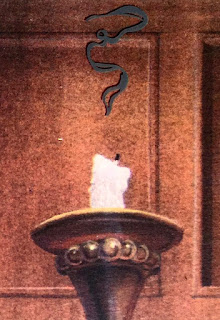Original production animation drawings of Bernard in graphite pencil from "The Rescuers," 1977, Walt Disney Studios; Numbered 3, 5, 7, 9, 11, 13, 15, and 17 center and lower right; Size - Bernard: 2 x 1 3/4", Sheets 12 1/2 x 15 1/2"; Unframed.
To purchase these drawings or to visit the Art Gallery, CLICK HERE!
To purchase these drawings or to visit the Art Gallery, CLICK HERE!
You'll need a boat. Evinrude's got the fastest boat around here. Evinrude, wake up! Start up your engine, boy! Read more: http://www.springfieldspringfield.co.uk/movie_script.php?movie=the-rescuer
"The
Rescuers" is an animated feature film produced by Walt Disney
Productions; and was released on June 22, 1977 by Buena Vista
Distribution. The film is based on a series of books by Margery Sharp,
most notably "The Rescuers and Miss Bianca." The 23rd film in the Walt
Disney Animated Classics series, the film is about the Rescue Aid
Society; an international mouse organization headquartered in New York;
and shadowed the United Nations. The Rescue Aid Society, a mouse based
group, was dedicated to helping abduction victims around the world at
large. Two of these mice, jittery janitor Bernard (voiced by Bob
Newhart) and his co-agent, the elegant Miss Bianca (voiced by Eva
Gabor), set out to rescue Penny, an orphan girl being held prisoner in
the Devil's Bayou by treasure huntress Madame Medusa.
Bernard, a stout mouse, is the unlikely hero of "The Rescuers." He is the janitor for the Rescue Aid Society in New York City, the mouse version of the United Nations. A message in a bottle arrives at the Society and Bernard is tasked with removing it, and in the process accidentally falls inside the bottle. The note reveals that a girl named Penny is in trouble and the Hungarian agent, Miss Bianca, asks for the rescue assignment. Bernard points out that the mission is too dangerous to go alone, Miss Bianca agrees, and so she asks Bernard to join her on the escapade. Bernard was animated by Frank Thomas and Ollie Johnston; and Miss Bianca was designed by Ken Anderson and animated by Mark Henn.
Close up of the original production animation drawings of Bernard.
Bernard, a stout mouse, is the unlikely hero of "The Rescuers." He is the janitor for the Rescue Aid Society in New York City, the mouse version of the United Nations. A message in a bottle arrives at the Society and Bernard is tasked with removing it, and in the process accidentally falls inside the bottle. The note reveals that a girl named Penny is in trouble and the Hungarian agent, Miss Bianca, asks for the rescue assignment. Bernard points out that the mission is too dangerous to go alone, Miss Bianca agrees, and so she asks Bernard to join her on the escapade. Bernard was animated by Frank Thomas and Ollie Johnston; and Miss Bianca was designed by Ken Anderson and animated by Mark Henn.
Close up of the original production animation drawings of Bernard.
Close up of the original production animation drawing of Bernard.
Original production animation drawing of Bernard.
Original production animation drawing of Bernard.
Original production animation drawing of Bernard.
Close up of the original production animation drawing of Bernard.
Close up of the original production animation drawing of Bernard.
This is a wonderful set of eight original production animation drawings of Bernard. In each he is eyes open and a nice action oriented image of him coming out of a mouse hole. A beautiful and rare set of drawings from this contemporary Walt Disney feature film, that is perfect for any collection!
#MrSnoops #GlenKeane #MargerySharp #OllieJohnston #MichelleStacy #madammedusa #Bernard #Bianca #AndreasDeja #medusa #therescuers #disney #animationcel #animationart #geraldinepage #miltkahl #JoeFlynn #EvaGabor #BobNewhart #DevilsBayou #untitledartgallery #MissBianca #Evinrude #EllieMae #animation #cel #WaltDisney









































